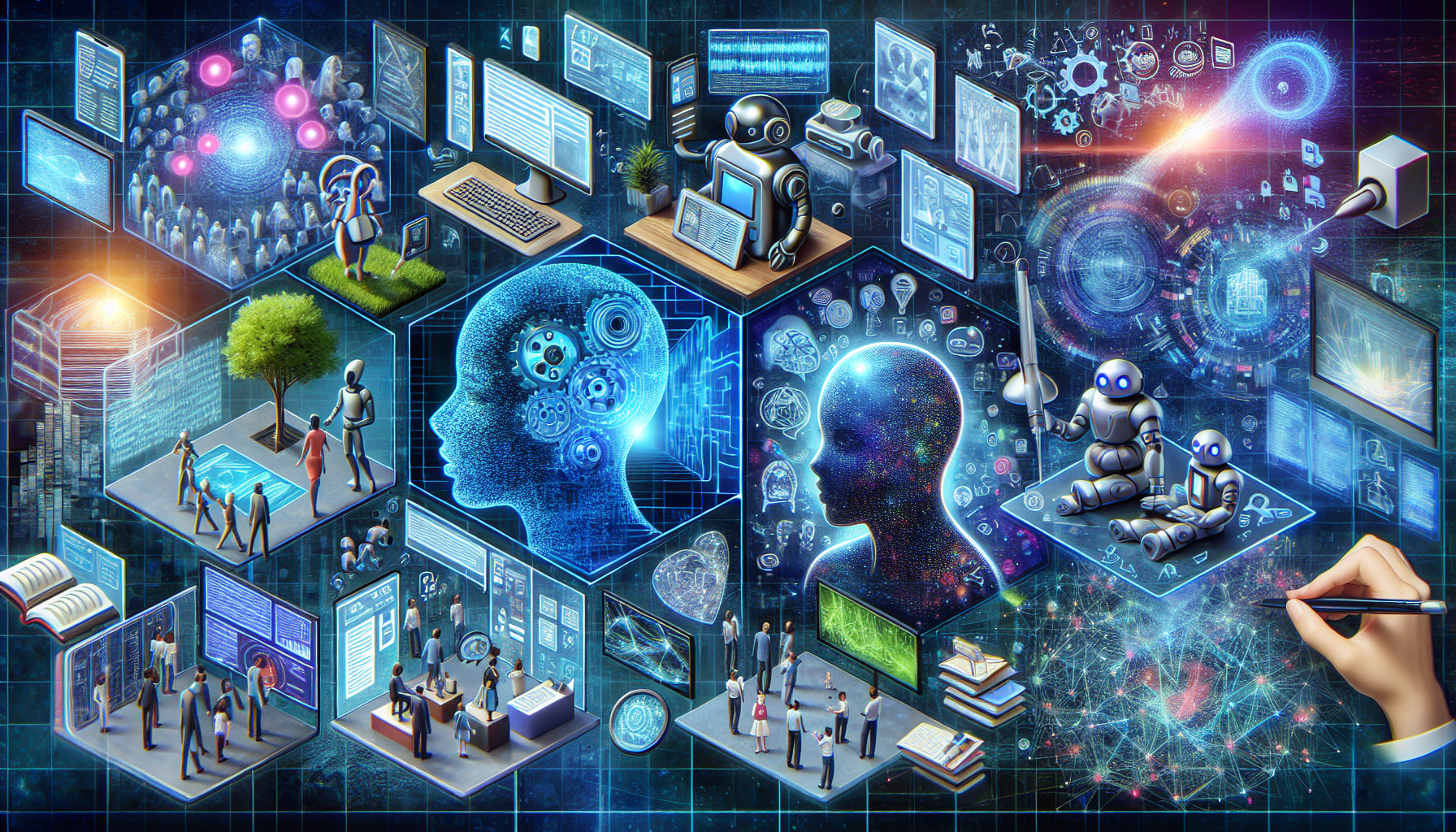Top 7 Best LLMs to Use in 2024

Here’s a look at the following large language models that have been leading the way in 2024 and paving the road for even more improvements in 2025. For now, they command the space for multiple reasons. Let’s take a look at the following LLMs that might be a good fit for you and have proven their worth to the market this year:
GPT-4o (OpenAI)
First on the list, we have GPT4o by OpenAI. Of course, this is considered one of the top dogs in the space. That’s because it performs exceptionally well and can understand like a human. Not to mention, it’s always proving itself for being versatile and reliable enough to be an excellent choice for many of its users. GPT-4 is quite powerful when it comes to natural language processing tasks such as generating text and even deep learning applications among others.
Another thing that makes this language model popular is that it’s easily accessible. It’s easily accessible to anyone via the wildly popular ChatGPT interface. The release of GPT-4o also offered considerable speed improvements over the previous GPT-4 model. Without question, it is considered one of the best tools for a more personalized learning experience and analyzing and managing data sets.
For simpler everyday tasks you can also use the smaller, faster GPT-4o mini model.
Claude 3.5 Sonnet (Anthropic)
The next one will be taking a look at Claude 3.5 by anthropic. it is considered one of the direct Challengers to GPT4 especially when it comes to content creation. Beyond that, it has the ability to handle complex instructions along with its recollection of extensive previous exchanges. The main reason for this is the large context window which will be excellent for many business settings. The speed of Claude 3.5 is double that of its past versions and proves it’s worth not only being efficient but also powerful for so many different applications.
Claude 3.5 is also nothing short of amazing for coding tasks. Many developers have Claude integrated with their IDE to code at lightning speed.
Google Gemini
If you don’t like the fast, accurate models provided by OpenAI or Anthropic then Google also has an LLM you can use. Gemini features plenty of multimodal AI models each with its own abilities. finally, one for text, another for images, a model for audio, and finally one for video. Needless to say, it happens to be one of the most versatile tools available. It also has the ability to utilize plenty of applications such as enhancing the use of Google workspace and even powering your own chatbots. it can easily integrate with Google docs, sheets, and Gmail among others.
Its performance is perhaps one of the best compared to its competitors. not to mention, it can outperform GPT-4 almost across the board. It comes as no surprise that Google is proving its worth in becoming the best of the best when it comes to LLM models that you can use. it can analyze data, translate languages, and so much more.
Google’s Gemini has a reputation for strong degrees of bias, so do keep that in mind as you are selecting an LLM.
Data Driven Vectorization Use our free experiments to find the best performing embedding model & chunking strategy. Try Free NowLLaMA 3.1 (Meta)
LLaMA 3.1 is probably the most popular open source large language model in existence today. Meta’s 8B or 70B parameter LLM might not be ready to give GPT-4, Claude 3.5, and other proprietary models a run for their money. But it is one of the most capable open source models you can find. You can use it for commercial use up to Meta’s revenue limits. As you move up to the 405B model, Llama3.1 starts to become a real contender for organizations that have
Mistral Large 2
Mistral Large 2 offers multilingual support, code generation, and reasoning capabilities. As a multilingual model, it also supports many languages. These include English, French, and Chinese. For developers, ML-2 is also a fantastic choice – offering support for over 80 programming languages.
One key differentiator of Mistral Large 2 is its focus on reducing hallucinations. This key feature ensures more accurate and reliable outputs.
Mistral Large 2 is designed for cost efficiency and high performance. It achieved 84.0% accuracy on the MMLU benchmark.

Large Language Models (LLMs): History and Abilities
Large language models or LLMs are considered part of the artificial intelligence ecosystem. Their purpose is to understand and generate natural and programming languages. They are also designed to utilize massive data sets so they can be able to recognize and generate text across plenty of tasks so they can be versatile in your AI toolkit. LLMs have been around for less than a decade. Yet, it’s showing itself as one of the more Reliable Tools when it comes to performing tasks such as multimodality, training data, and more.
What Are The Key Features of The Best LLMs?
The top LLMs that we have listed above have key features that will not only set them apart from the others but have also been convenient for those that have used these tools. here’s a look now at the following features and why they are so important for LLM users:
- Context Window: The context window size is something to pay attention to when looking for an LLM tool. The reason for this is that it can be able to generate text that is both coherent and contextually relevant. The Claude 3 Opus for example has a context window size of up to 200,000 tokens. To translate this, it has the ability to generate up to 500 pages of text or up to 150,000 words. Thus, the larger the tokens, the more pages of text or words it can output. On top of that, it will have the ability to identify Trends by analyzing and utilizing large data sets. as this happens, they will be able to summarize any long-form answers while also refining any ideas or designs that you may have.
- Fine-Tunability: When it comes to critical features, the fine-tuning ability of an LLM will be a big one at that. The reason for this is that it will need to fit any specific business needs while also having its own knowledge that is domain specific. In addition, knowledge distillation and fine-tuning will be excellent when it comes to creating efficient models that stem from larger LLM tools. it will be able to perform particular tasks at a much higher level compared to others. Claude 3 is one of those examples where you are able to train your data and customize it in accordance with specific requirements that you have set for yourself. It also has excellent flexibility and adaptability.
- Multimodal Capabilities: This will allow LLMs to process and generate responses across numerous formats. at the same time, it can also have the ability to interact with text, video, images, and code. One such example of an LLM with such multimodal capabilities is Google Gemini.

Choosing the Best LLM For You
It can be a challenge to choose the right LLM tool. It is important to find one that will not only be a good fit for your needs, but to find one that will be great for long-term use. The key factors that you’ll want to consider before choosing the right LLM for you will be based on things such as task specific capabilities, fine tuning abilities, language support, available resources, and your budget. That’s why it is important to assess your most critical needs and choose an LLM that is best suited for your budget. If money is a bit of an issue, try your best to find the best LLM tool that you can afford as opposed to resigning yourself to choosing the cheapest option.
At the end of the day, the quality and performance of the LLM should be something that you should take priority over compared to the price tag itself. Indeed, the most expensive LLMs might be the best performing. but you do not have to settle for less just because you’re trying not to spend too much money.
What Are The Future Trends in LLMs?
What does the future hold for LLMs? it might be important to pay attention to this space as the digital age keeps rolling. There’s no secret that there are plenty of emerging trends that are about to take shape in this part of the technological realm in particular. they will include but not be limited to the following:
- Better data quality: There’s no denying that data will be a huge thing to focus and emphasize on when it comes to the changing and refinement of LLM tools. It’ll be easier to make critical decisions based on accurate data, so you won’t have to worry about them backfiring because of inaccuracies. Yes, sometimes the data that appears to be real might not be as accurate as you think, which could lead to what seemed like a bad decision to go south. Yet, such occurrences can be few and far between.
- Increased multimodality: Multimodal capabilities will certainly be something that will be seen across various LLMs. in addition, you’ll see plenty of them in various applications. they will handle complex data analysis, become Ai assistance, and so much more. The question is, which of the existing tools may be increasing its multimodality in an effort to compete with the likes of Google Gemini and others? that remains to be seen.
- Increased accessibility: Finally, it’s important to note that LLMs should be easily accessible. Not to mention, by increasing such accessibility, these tools can be leveraged by more users. it will not only enhance productivity, but it can also encourage creativity and innovation throughout various sectors and industries.
Final Thoughts
The seven large language models that we have listed are considered some of the best in the business. you can choose one that will be based on the needs that you want to meet and so much more. whether it’s creating content, analyzing data, or something else, there’s bound to be one that will be the best fit for you. be sure to consider your options carefully and choose one that will handle your most critical needs as soon as possible.